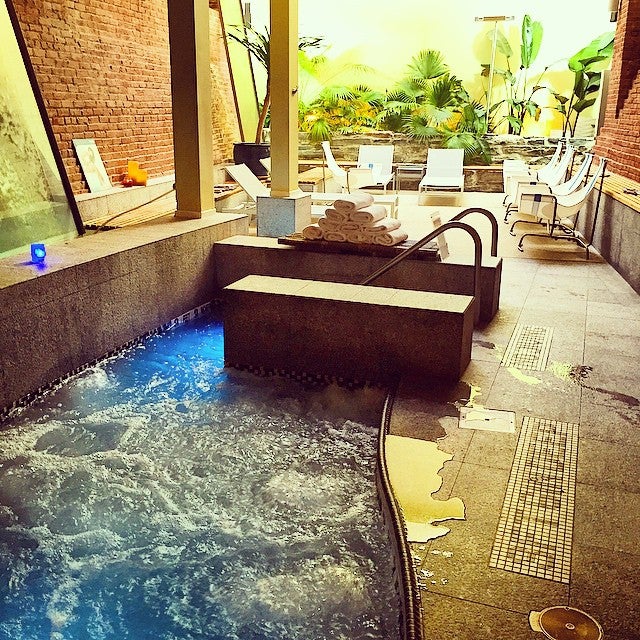
In Manhattan, the term japanese sensual massage manhattan often surfaces in searches, but real experiences tend to emphasize wellness, mindfulness, and professional boundaries. This guide offers a practical view: how to choose a legitimate spa, what a session tends to involve, and how to set boundaries to keep the experience professional and soothing.
Setting the record straight about tradition and context
Japanese massage traditions emphasize touch as a path to balance. Shiatsu uses finger-pressure along energy channels, guided by calm listening to the body’s responses. An authentic session centers on comfort, client consent, and clear communication with the therapist. If a studio markets something explicitly sexual, consider it a red flag and step away.
In Manhattan’s competitive wellness scene, studios may blend modalities, so it helps to ask about the goals of a session. Some clients seek deep muscle work, others prefer a gentle, restorative vibe. The key is to distinguish therapeutic bodywork from anything that feels sexualized. You deserve a setting that respects your boundaries from the first hello.
Finding reputable providers in Manhattan
Begin with licensing. In New York, massage therapists who practice professionally are typically licensed as Licensed Massage Therapists (LMT) through the state. A legitimate studio will display the therapist’s credentials and provide a clear description of techniques offered. If you can’t confirm credentials before booking, it’s a sign to keep looking.
Beyond credentials, read recent reviews and observe the studio’s approach to safety and privacy. Clean exam rooms, fresh linens, and a straightforward cancellation policy signal professionalism. When you call or email, notice whether the staff answer with patience and clarity about what’s on the table.
Here are practical steps to vet a spa before confirming a visit:
- Check for a NYS license for the therapist and the facility’s compliance with local health codes.
- Ask about the modalities offered and whether the session focuses on relaxation, stress relief, or therapeutic massage.
- Clarify draping practices, room privacy, and how boundaries are maintained throughout the session.
- Inquire about pricing, duration, and any additional fees up front to avoid surprises.
| Green flags | Red flags |
|---|---|
| Licensed therapist, clean facility, transparent pricing | Requests for sexual interaction or vague policies |
| Plain description of techniques and goals | Pressure to tip excessively or to extend services beyond scope |
| Respectful, professional staff and privacy | Ambiguity around boundaries or room setup |
What to expect during a session
Most sessions begin with a brief check-in. You’ll share any areas of focus—shoulders, lower back, hips—along with comfort levels regarding pressure. A therapist will discuss your goals and any injuries or health considerations. From there, you’ll be draped appropriately; the room is kept warm, quiet, and free of distractions.
Massage techniques might include long, flowing strokes, deeper kneading, or targeted pressure to release tension. The emphasis remains on safe, considerate touch and listening to your feedback. Depending on the duration, you may leave feeling looser, calmer, and more present in your body.
Foundational etiquette matters as well. If you’re not sure about a technique or boundary, speak up. Most therapists appreciate direct, respectful communication—the same way you’d discuss timing, pressure, or areas to avoid. And if anything at any point feels uncomfortable, you can pause, adjust, or stop the session entirely.
Therapeutic benefits and precautions
Therapeutic massage techniques rooted in Japanese traditions can ease muscle tension, improve circulation, and reduce stress hormones. Clients often report better sleep and a sense of grounded calm after a session. It’s not a replacement for medical care, though; if you have an acute injury, a licensed professional can tailor the work or refer you to a clinician.
To protect yourself and others, avoid sessions if you’re not feeling well, or if you’re pregnant and haven’t consulted a healthcare provider. Inform the therapist about any medical conditions, recent surgeries, or medications that could affect sensation or safety. Respectful boundaries and good hygiene create an atmosphere where healing can unfold without distraction.
Choosing the right spa and therapist
Personal compatibility matters as much as technique. Take advantage of a brief intro session or a shorter appointment to gauge fit. Review bios, languages spoken, and the therapist’s approach to pressure and draping. A good match can transform a routine massage into a meaningful reset for body and mind.
Because the market is crowded, it’s worth visiting a few studios with different vibes. Some favor a quiet, meditative environment; others lean toward a brisk, athletic-style massage. Pay attention to how the staff answers questions and how clearly they outline what’s included in the price. The right studio will feel transparent, respectful, and focused on your wellbeing.
Common questions and myths
Is it sexual? When properly run, legitimate massage regarding wellness centers on relaxation, muscle work, and mindfulness—not sexual entertainment. If a practitioner presses for anything beyond professional boundaries, walk away and report the incident. Similarly, tipping norms vary; some studios include gratuity in the price, others expect it at the end based on service quality.
What should I bring or wear? Typically you’ll be provided with towels and gowns or robes; wear comfortable clothing to the session’s check-in. Communicate your comfort level with draping and exposure before the session begins. Finally, have realistic expectations: a good massage can release tension and restore calm, but it won’t erase underlying medical issues overnight.
Thinking about a massage that blends Japanese techniques with contemporary wellness in Manhattan? Start with clarity: know what you want from the session, verify credentials, and trust your instincts in the moment. When you choose a reputable provider and set clear boundaries, the experience becomes less about buzzwords and more about a grounded, restorative reset for body and mind.